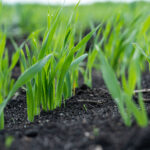Sweet corn is a warm-season crop that rewards careful planning with tall, vigorous plants and full, sweet ears. As an experienced gardener with years of successful corn harvests, I’ve learned that when and where you plant sweet corn makes all the difference in your yield. Below are my tested tips, with added insights to help you grow sweet corn like a pro.
📅 When to Plant Sweet Corn
Corn is a tender warm-season annual that should only be planted after the danger of frost has passed. Timing is everything if you want consistent, high-quality ears.
✅ Soil Temperature Matters
- Wait until the soil is at least 60°F (16°C) before planting directly outdoors
- For optimal germination, soil should be 65–75°F (18–24°C)
- Black plastic mulch can be used to warm soil in early spring
Corn can germinate in soil as cool as 50°F (10°C), but don’t expect reliable results. Cold, wet soil delays sprouting and increases the risk of seed rot. Use a soil thermometer to get accurate readings.
Tip from experience: I’ve had the best results planting 2 to 3 weeks after the last expected frost, when soil and air temps are consistently warm.
🕰️ Frost-Free Days Needed
Sweet corn takes 60 to 100 days to reach harvest, depending on the variety and local weather. Check your seed packet to choose early, midseason, or late varieties—or plant a combination to extend your harvest.
🌱 Starting Seeds Indoors
In short-season regions, you can start corn seeds indoors 2 to 3 weeks before the last frost:
- Use deep cell trays or biodegradable pots (corn dislikes root disturbance)
- Place trays on a seedling heat mat and under grow lights
- Transplant into the garden once seedlings are 3–4 inches tall and all danger of frost has passed
Note: Transplanted corn should be hardened off for a few days before going into the ground to prevent shock.
🔁 Successive Planting
For a continuous harvest, make new plantings every 2 to 3 weeks until mid-summer. Alternatively, plant early, midseason, and late-maturing varieties at the same time.

☀️ Where to Plant Sweet Corn
Corn thrives in full sun—at least 6 to 8 hours of direct sunlight per day is essential for strong growth and ear development. Choose a site that’s wide open and not shaded by trees, fences, or buildings.
📍 Ideal Soil Conditions
Sweet corn grows best in:
- Well-drained, loose soil with plenty of organic matter
- A soil pH between 5.8 and 6.8 (do a soil test to adjust if necessary)
- Warm, moisture-retentive soil that doesn’t become soggy
Improve your soil by working in aged compost or aged manure to a depth of 8 to 10 inches before planting. For even better results, amend your beds in the fall before spring planting so nutrients have time to integrate.
If your garden has heavy clay or compacted soil, consider using raised beds to improve drainage and warming.
🌽 Why Block Planting Matters
Corn is wind-pollinated, meaning pollen must fall from the tassels (male flowers) at the top of the plant onto the silks (female flowers) lower down. To improve pollination and ensure well-filled ears:
- Plant in blocks of at least 3 to 4 short rows instead of a single long row
- Keep rows 2 to 3 feet apart
- Space seeds 8 to 12 inches apart once thinned
Close planting enhances pollination, especially when there’s little wind. In my experience, even a daily hand-shake of the stalks during tasseling can significantly increase yield in small gardens.
season, and late-maturing varieties at the same time.
🛠️ Final Tips from My Garden:
- Avoid planting sweet corn near field corn or popcorn to prevent cross-pollination, which can affect flavor and kernel texture.
- Rotate your crops each year—don’t plant corn in the same spot year after year.
- Consider planting nitrogen-fixing crops like beans or clover in the off-season to boost soil fertility for next year’s corn.

Overview Post: How to Grow Corn: The Complete from Planting to Harvest
🌽 Related Posts: Explore More on Growing Corn
🌱 Getting Started with Corn
- Starting Sweet Corn from Seed: Proven Tips for Early Success
- When and Where to Plant Sweet Corn for the Best Yield
- Planting Sweet Corn: Spacing, Block Planting, and Depth Tips
- Can You Grow Corn in Containers? Yes-Here’s How
💧 Watering, Feeding, Pollination & Care
- How to Water and Fertilize Sweet Corn for Maximum Yield
- Sweet Corn Pollination: Natural and Hand-Pollination Tips
- The Best Companion Plants for Sweet Corn (And What to Avoid)
- What To Do When Corn Falls Over (Lodging Tips)
🌽 Harvest, Storage & Serving
- How to Harvest and Store Sweet Corn
- How to Store Fresh Corn and Preserve It for Later
- Seven Easy Wasy to Cook and Serve Sweet Corn
🐛 Pests, Diseases & Troubleshooting
🌟 Sweet Corn Varieties The Best Sweet Corn Varieties for Home Gardeners



